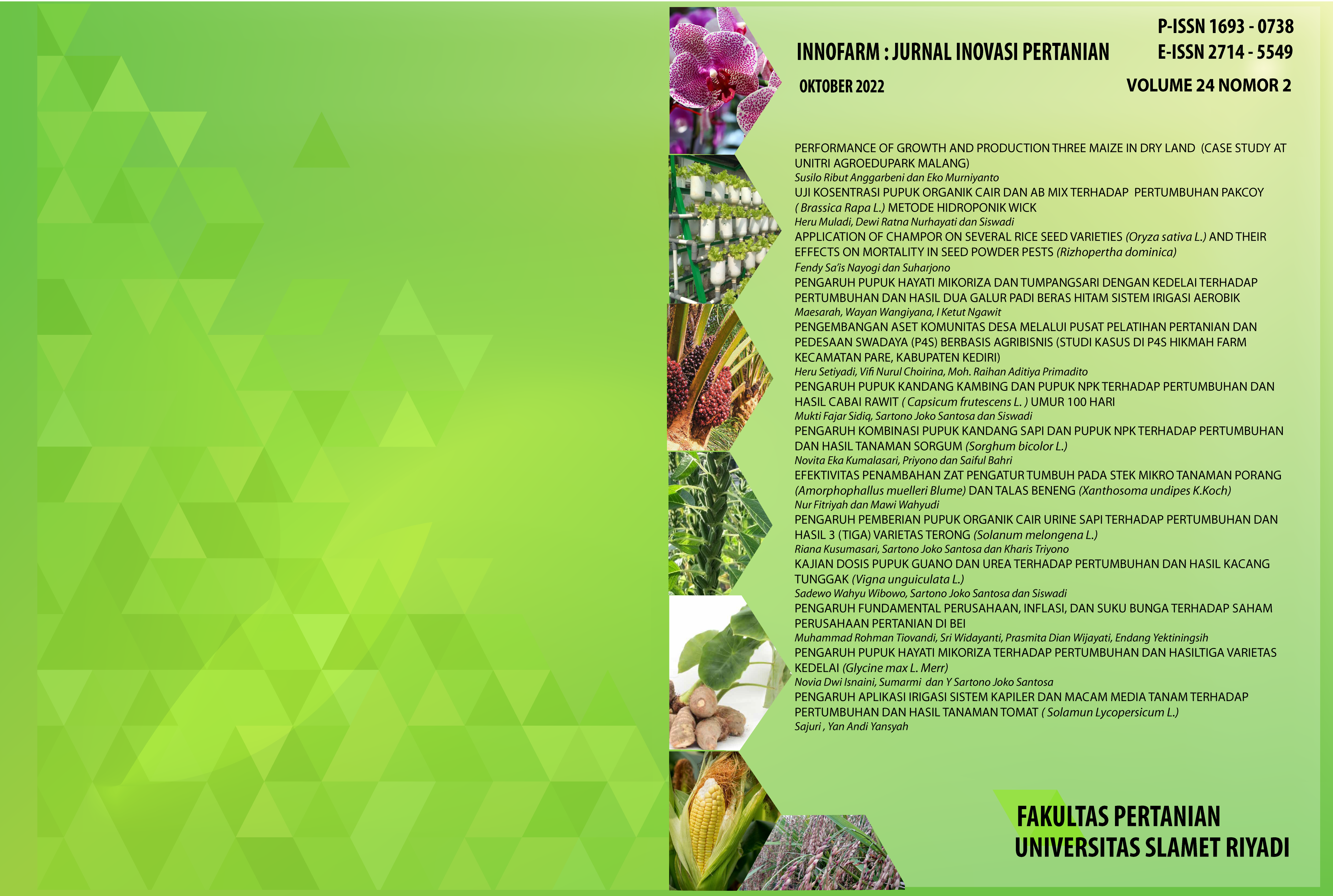A Effect of mycorrhiza biofertilizer and intercropping with soybean on growth and yield of two promising lines of black rice under aerobic irrigation system
Keywords: Black rice, promising lines, intercropping, soybean, mycorrhiza
DOI:
https://doi.org/10.33061/innofarm.v24i2.7370Abstract
Abstract. Black rice is a functional food ingredient that is very beneficial for human health, but in general, black rice varieties are mostly upland rice with low productivity. This study aimed to determine the effect of mycorrhiza biofertilizer and intercropping with soybean on growth and yield of two promising lines of black rice in an aerobic irrigation system. The experiment was carried out in Dasan Tebu, Kediri, West Lombok, from May to September 2020, which was arranged according to the Split Split-Plot design with three blocks and three treatment factors, namely black rice genotypes (G3; G9) as the main plots, intercropping with soybeans (T0: without intercropping; T1: with intercropping) as the sub-plots, and mycorrhiza biofertilizer application (M0: without; M1: with mycorrhiza) as the sub-sub-plots. The results indicated that both black rice genotypes were different only in the percentage of unfilled grains, i.e. lower in G3 (10.43%) than in G9 (14.39%). Additive intercropping with soybean significantly increased growth and yield components of black rice, with a higher grain yield was on black rice intercropped with soybeans (38.42 g/clump) compared to monocrop rice (32.62 g/clump). Application of mycorrhiza biofertilizers also significantly increased tiller number, dry straw weight, and grain yield per clump, and decreased the percentage of unfilled grains, with a higher grain yield was obtained in black rice supplied with mycorrhiza biofertilizer (38.47 g/clump) than without mycorrhiza (32.57 g/clump). However, there were significant interactions between the treatment factors, especially on grain yield, indicating that G9 was more responsive to application of mycorrhiza biofertilizer than G3.
Downloads
Published
Issue
Section
License
Copyright (c) 2022 Maesarah, Wayan Wangiyana, I Ketut Ngawit

This work is licensed under a Creative Commons Attribution-NonCommercial 4.0 International License.
Authors who publish this journal agree to the following terms:
- Authors retain copyright and grant the journal right of first publication with the work simultaneously licensed under a Creative Commons Attribution License that allows others to share the work with an acknowledgement of the work's authorship and initial publication in this journal.
- Authors can separately make additional contractual arrangements for non-exclusive distribution published by the journal (e.g., publish it in a book), with an acknowledgement of its initial publication in this journal.
- Authors are allowed and encouraged to send their work via online (e.g., in the institutional repositories or their website) after published by the journal.


















